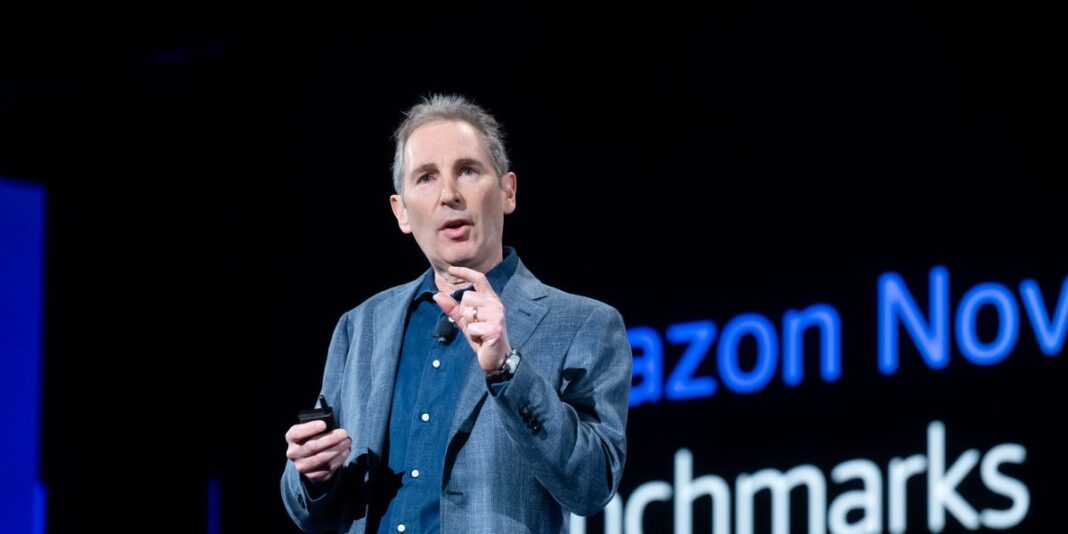## Amazon’s Got a New Game: Winning at Work Means Winning at Wages Remember when a stable paycheck and a decent 401k were enough? Those days seem long gone at Amazon, where the race to the top is getting a serious cash injection. Business Insider reports that Amazon is shaking up its pay structure, with the promised land of higher wages now reserved exclusively for the “consistently high-performing.” This isn’t just another headline about corporate greed; it’s a glimpse into the future of work – a future where loyalty and long hours are being replaced by a relentless pursuit of individual performance metrics. Join us as we unpack this latest move by Amazon and what it means for the future of the American workforce.
More Transparency

Amazon’s internal guidelines aim to provide a clearer understanding of how employee performance affects compensation, helping to reduce frustration and improve morale. This increased transparency is a significant step forward, as it allows employees to better understand the factors that influence their pay and make informed decisions about their career development.
The revised compensation structure may encourage employees to focus on long-term performance rather than short-term gains, leading to increased job satisfaction and retention. By emphasizing the importance of sustained top performance, Amazon is sending a strong message about the value it places on its employees’ contributions.
Managerial Roles
Managers will play a crucial role in implementing the new model, ensuring that individual OV ratings are accurately reflected in employee compensation. This requires a high level of transparency and communication between managers and employees, as well as a deep understanding of the factors that influence compensation.
Industry Trends and Comparisons
Amazon’s pay structure revamp follows similar moves by other major tech companies, including Google, Microsoft, and Meta, as they seek to streamline employee rewards and tighten overall costs. This trend towards more targeted compensation is driven by the need to control costs and ensure that rewards are aligned with business objectives.
Innovative Compensation Strategies
Amazon’s pilot program allowing employees to take 25% of their new stock awards in cash highlights the company’s willingness to adapt to changing employee preferences. This flexibility is a key differentiator for Amazon, as it allows employees to tailor their compensation to their individual needs and goals.
Competition for Talent
The revised compensation model is likely to influence the competitive landscape for top talent, as companies vie for the best employees in a tight labor market. By offering a more targeted and transparent compensation structure, Amazon is positioning itself as a leader in the talent acquisition and retention space.
Conclusion
In conclusion, Amazon’s decision to revamp its pay structure to favor “consistently high-performing” employees marks a significant shift in the company’s compensation strategy. As discussed in the article, the new structure will eliminate bonuses and instead tie pay to individual performance, with top performers earning up to 15% more than their peers. This change is a direct response to the growing competition for talent in the tech industry, as companies like Google and Facebook offer more lucrative compensation packages.
The implications of this change are far-reaching, not only for Amazon employees but also for the broader tech industry. By tying pay to individual performance, Amazon is sending a clear message that it values and rewards hard work and dedication. This could lead to increased motivation and productivity among employees, as well as a more meritocratic approach to promotions and career advancement. However, it also raises concerns about the potential for unfair treatment and bias in the evaluation process.
As Amazon continues to navigate the rapidly changing landscape of the tech industry, it will be essential for the company to strike a balance between rewarding top performers and ensuring fairness and transparency in its compensation practices. As the article notes, this change is just the latest step in Amazon’s efforts to adapt to a rapidly evolving market, and it will be fascinating to see how this new approach plays out in the coming years. As we look to the future, one thing is clear: the war for talent in the tech industry will only continue to intensify, and companies like Amazon will need to remain agile and innovative in their approach to compensation and retention if they hope to stay ahead of the curve.
